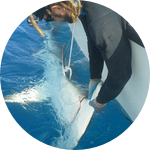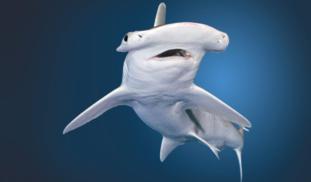Please wait...
About This Project
We will acoustically tag bonnethead sharks in a South Carolina estuary to investigate space use and determine if the introduction of offshore wind farms could cause environmental displacement from this area. Our work will ensure that the sustainable energy from offshore wind farms will not adversely affect the marine environment. The bonnethead is being used as a model species and the findings will be used for protecting all coastal sharks, the marine ecosystem, and provided ecosystem services.

Browse Other Projects on Experiment
Related Projects
How do polar bears stay healthy on the world's worst diet?
Polar bears survive almost entirely on seal fat. Yet unlike humans who eat high-fat diets, polar bears never...
Uncovering hidden insect diversity associated with a likely undescribed gall-forming midge
Does a likely undescribed species of gall-forming midge (pers. comm. Ray Gagné) on Eriodictyon plants (Yerba...
Macrofungi of the California archipelago
The eight islands of the California Archipelago are a well-studied biodiversity hotspot — but we know almost...





